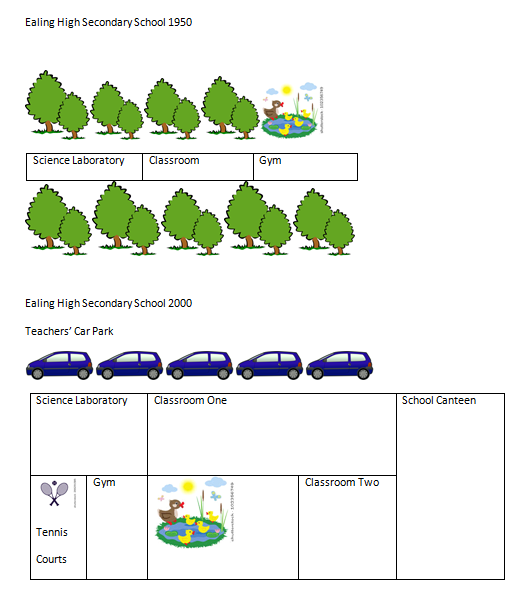
Today we are looking at the Academic IELTS Task 1 question called Changes in a Diagram. You are all used to the regular Task One questions which cover the various line graphs, bar charts, pie charts and tables but what about the other kinds of Task One?
These do not often appear in the IELTS writing exam and for this reason it is wise to be prepared for these when they do show.
Two other types of Task One
A recent article has covered the IELTS Process writing Task 1 and today’s blog will look at the task that is called, Changes in a Diagram.
Changes in a Diagram – The Formula
In an IELTS Task 1 – Changes in a Diagram question you need:
- An Introduction
- An Overview
- 2 or 3 Body Paragraphs (depending how quickly you can write your ideas down)
- As you are talking about changes, you’ll be using the present perfect and depending on how these changes are described the past perfect and the past simple. If the changes in the diagram are projected into the future, use the future perfect.
- Use the passive where possible
- Use expressions showing points of the compass if a compass is there
- Use prepositions of place
- Use expressions to introduce each new paragraph
- Use complex sentences (2 ideas joined by a linking expression)
- Use expressions to show how area has changed
- Use the British Council IELTS Task 1 public band descriptors to guide you
The Introduction
The given (A/1) diagrams illustrate(2) the changes Ealing High Secondary School has undergone (3) since its establishment in 1950, including changes and improvements to the school (4) and its surrounding areas in 2000, these being (4) at certain times in the various highlighted years, additions such as (4) extra classrooms, a canteen, a teachers’ car park and some tennis courts.
In the introduction you include all the important information from the diagram for the answer to be considered well developed.
The Overview
What can be seen, (A/ 5) generally speaking, (6/12) is that importance was given(7) to enlarging the school building and adding tennis courts, together with (4) the car park and moving the site of the duck pond, all of which (4) replaced the wooded areas.
In the overview, in this diagram, you have to explain what has changed generally from the first selected year until the final selected year but with no specific details.
Body Paragraph 1
On analysing the plans (A/4), an important fact to be noted (7) is that different modifications were made (7) to the secondary school in the year 2000, when (4) a new car park for the teaching staff was constructed alongside (13) the school building to the north (14) and tennis courts were added (7) next to (13) the gym and to the south,(14) where (4) two small woods had been.(3a)
Body Paragraph 2
If the drawings are looked at in more detail,(A/7/8) in 2000, the most significant alteration(9) to the school territory was that the area of classroom one had been(3a) doubled (11) by moving the gym, and using(4) this(10) additional space to expand the classroom .(10) The second important change was the adding of another classroom(10) next to (13) classroom one, to the south (14) and the inclusion of tennis courts near(13) the new position of the gym under (13) the science laboratory. Additionally (4) by the year 2000,a large canteen was built, bordering(13) the east side (14) of both classroom one and classroom two, while(4) the duckpond had been(3a) repositioned between(13) the gym and the new classroom.(10)
In the body paragraphs you focus on the details and describe what has changed and depending on the diagram you may need to include points of the compass, prepositions of place and changes to the measurements of areas used.
An Analysis of This Task
A = An expression to introduce the paragraph
1= show how to play with the parts of speech = past participle to adjective
2 = make sure the verb matches the noun (singular or plural)
3 = a change = present perfect
3a = past perfect
4 = linking expressions inside the sentences
5 = modal passive
6 = overview language
7 = passive variations
8 = first conditional passive
9 = superlative
10 = reference
11 = an unusual expression to describe changes in area measurements
12 = idiomatic expression
13 = prepositions of place
14 = points of the compass
How to benefit from this Article
- Learn
- Practice
- Recycle
Until you are ready for your IELTS Test
And Finally
You will understand what the examiner is looking for and improve your band score on the day of the IELTS Exam.
P.S Don’t forget that if you would like your writing assessed and receive coaching from me you can click this link to purchase IELTS Writing Correction, Assessment and Coaching

Leave a Reply